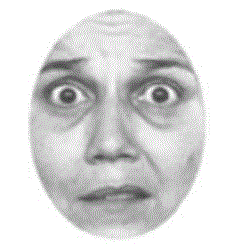What are psychometric tests
Psychometric tests are a standard and scientific method used to measure individuals' mental capabilities and behavioural style. Psychometric tests are designed to measure candidates' suitability for a role based on the required personality characteristics and aptitude (or cognitive abilities). They identify the extent to which candidates' personality and cognitive abilities match those required to perform the role. Employers use the information collected from the psychometric test to identify the hidden aspects of candidates that are difficult to extract from a face-to-face interview.
Once the Human Resources manager, or person/s in charge of hiring, ascertains that you have fulfilled the initial requirements for the position by reviewing your résumé , they will then send out a letter with specific instructions for sitting the psychometric test. The prime objective of this is to identify at an early stage those job applicants who are unlikely to fill the requirements of the position on offer and consequently narrow the applications further.
Some job applicants believe that the psychometric test is not a good measure to assess their real abilities, personality traits, and suitability for the job. However, the psychometric tests are statistically examined, and are constructed to be objective and unbiased. This is done by using standard methods of assessment so that everyone is presented with the same questions and instructions for completing them. Our experience shows that psychometric tests are very reliable in predicting candidates' performance, and in most cases the test report provides an accurate evaluation of the applicant. However, this doesn't say that with a good preparation you can't improve your suitability for a job. We have proven that an effective preparation which highlights your relevant strengths and improves your weaknesses increases your chances to win the job you wish to get.
Types of Psychometric tests
Most psychometric tests can be grouped into two. The first group of psychometric tests is measuring your cognitive or aptitude abilities. These psychometric tests are based on timers and the idea behind them is that in order to separate between people’s cognitive abilities, we need to use ask them to complete a list of questions in a very limited time. Those better at the cognitive ability measured will be able to get more questions solved correctly than those who are less strong in the ability measured.
This group of psychometric tests includes tests such as abstract tests, numerical tests, verbal tests, mechanical tests and emotional intelligence tests.
Abstract type psychometric tests:
This psychometric test measures your ability to solve problems, think strategically and think on your feet. The typical test question styles used in the abstract psychometric test are two - the first style is offering a group of shapes and you need to decide what is a missing shape, or what is the next shape or which is the odd-one-out shape. The concept behind this style of test questions is that you need to identify the logical rules that apply to the group of shapes and use them to identify the missing shape. The second style of test questions is offering you a group on initial shapes then there are some processes applied on the shapes to transform them to the final shapes. Your task is to find what each process does. Then use this knowledge to identify how a group of initial shapes will transform to final shapes. The abstract type of psychometric test has a timer either for the entire test or per test question.
Let’s review some example of the abstract type of psychometric tests:
The following example psychometric test question demonstrates one style of abstract type psychometric test questions in which you have a horizontal list of shapes and your task is to identify the patterns or logical rules for the set of shapes to be able to predict the next or missing shape.
 What is the next shape?
What is the next shape?
To answer this psychometric test question, we need to first identify the patterns and logical rules among the group of shapes in the test question. In this set of shapes, we can identify two logical rules or patterns moving left to right. The first is that all the inner shapes move one place anticlockwise each step. The second rule is that, at every step, the triangle alternates with a black square. At step five, there is a triangle at the top – therefore, at the next step, it will move anticlockwise into the left place and become a black square.

Let's review another style of an abstract type psychometric test question. In this style you need to find what specific buttons do to a group of original shapes based on several example lines in the Base Screen box. Once you find what the buttons do your then can find what the correct final figure is in the question line. Let's examine the following psychometric test example:

In this abstract type psychometric test question you need to find what buttons 1, 3 and 5 do.
From the first line, we see that the original figure (the three shapes to the left) goes through two transformations to form the figure on the right: (i) a change in the shapes (square to circle, or circle to square); and (ii) a change in colours (black to white, or vice versa). Two buttons are active in this line (1 and 2); however, we still don’t know which one changes the shape, or which one changes the colour.
The second line also shows a figure that swaps the colour of its three shapes, but there is no change in those shapes. This time, buttons 2, 3 and 4 are ‘active’ – so, button 2 (the only common ‘active’ button with line 1) must be the one that swaps colours; and we can now deduce that it is button 1 that changes (or toggles) the shapes. Buttons 3 and 4 must, then, be the ones that modify the horizontal and vertical lines, so we will need to refer to the third line to work out their individual functions.
In line three, because buttons 1 and 2 are ‘inactive’, we know that there will be no transformation of colour or shape. Buttons 4 and 5 are ‘active’, and we can see that the right figure has been made smaller and a vertical line removed. Line 3 shares only one active button with line 2 (i.e. button 4), and there is only one common transformation between these lines: the vertical line has been switched ‘on’ or ‘off’. Therefore, button 4 is a vertical line toggle switch, which means (from the previous line) that button 3 must be the on/off toggle for horizontal lines. Button 5, therefore, can only be for changing (or toggling) the size of the shapes in the figure (from big to small, or vice versa).
We can now summarise the button functions thus:
- Button 1 – toggles the shapes within the figure (squares to circles, and vice versa)
- Button 3 – toggles the horizontal lines on or off
- Button 5 – toggles the size (big or small) of the shapes within the figure.
Now, we can apply those button functions to our question line:
- Button 1 – will change the figure to a circle and a square.
- Button 3 – will add a horizontal line to all shapes in the figure.
- Button 5 – will toggle the shape sizes – the first from big to small, and the second from small to big.
The correct answer is:

A third style of abstract psychometric test question is demonstrated in the example below.
In this style of abstract psychometric test questions you are shown a grid of 3 by 3 with 8 shapes plus one missing shape. Your task is to find the patterns or logical rules that apply to the shapes going from left to right or top to bottom. Then apply these patterns to find what is the missing shape that completes the patterns.
Let's examine the following psychometric test example:

To solve this abstract psychometric test question, we need to find the logical rules that apply to the shapes going from left to right or top to bottom. We can see that each cell contains four arrowheads, some pointing left, and some pointing right. The last cell in each row is a combination of the first two arrowhead of the first cell, then the last two arrowhead of the middle cell. So, if we look at our top row, the first two arrowheads in first cell are < < and the last two arrowheads of middle cell are < >. If we combine them, we get < < < >.
Verbal type psychometric tests:
This type of psychometric test measures your ability to process information in a logical manner to make a decision. It also measures your ability to identify and focus on the critical information rather than on all the information provided. The verbal psychometric test has several different test question styles.
Let’s review some examples of verbal psychometric test questions.
The first style of verbal psychometric test questions is one in which you are presented with a list of facts and a conclusion. Your task is to quickly identify which facts lead to the conclusion being correct.
Let's review the following test example:
Which two statements together prove that Tim has a red car?
A. Gil likes Tim's car colour
B. Tim likes fast cars
C. Gil has a fast car
D. Gil likes only red cars
E. Tim's car is not silver
To answer this verbal psychometric test question, we need to first examine what each statement says. If we take statement A ‘Gil likes Tim’s car colour’ and combine it with statement D ‘Gil likes only red cars’ then those alone prove that Tim has a red car. The logic is that if Gil likes only red cars (D) and he likes Tim’s car colour (A) then Tim’s car must be red.
A second style of verbal psychometric test questions is test questions in which you have a passage to read and a set of 3 questions to answer. However, in this style the test questions are not only offering 3 answer options - true, false and can't say but they offer a list of statements as answer options.
Let's review the following verbal psychometric test example questions:
In epistemology, the Munchausen trilemma is a thought experiment used to demonstrate the impossibility of proving any truth, even in the fields of logic and mathematics. If it is asked how any knowledge is known to be true, proof may be provided. Yet that same question can be asked of the proof, and any subsequent proof. The Munchausen trilemma is that there are only three options when providing proof in this situation: (a) the circular argument, in which theory and proof support each other; (b) the regressive argument, in which each proof requires a further proof, ad infinitum; and (c) the axiomatic argument, which rests on accepted precepts. The trilemma, then, is the decision among the three equally unsatisfying options.
The name Munchausen Trilemma was coined in 1968 by the German philosopher Hans Albert in reference to a trilemma of “dogmatism versus infinite regress versus psychologism” used by Karl Popper. It is a reference to the problem of ‘bootstrapping’, based on the story of Baron Munchausen pulling himself and the horse on which he was sitting out of a mire by his own hair.
Based on the passage, wwhich one of the following does NOT follow based on the content of the text?
a. Karl Popper was a German philosopher.
b. There are three argument options when providing proof of whether any knowledge is true.
c. The axiomatic argument is one which rests on accepted precepts.
d. When each proof requires further proof ad infinitum, it is called a regressive argument.
e. Baron Munchausen rode a horse.
To answer this style of verbal psychometric test questions you need to read the passage to find the correct answer. Nowhere in the text does it mention Karl Popper’s origins. The text only says that Hans Albert was a German philosopher. Therefore, the correct answer is that Karl Popper was a German philosopher.
Numerical type of psychometric tests:
This type of psychometric test measures your ability to process numerical information in a logical manner to make decisions. Same as with verbal psychometric tests, it also measures your ability to identify and focus on the critical information rather than on all the information provided. The numerical psychometric test has several different test question styles.
Let’s review some examples of numerical psychometric test questions.
The first style of numerical psychometric test questions is questions which present numerical information in tables and/or graphs. Then you are asked a question based on the information presented. Let's check the following example psychometric test question:

What is the ratio of the differences in actual sales to target sales in Thailand and Italy during the fourth quarter?
To answer this numerical psychometric test question, we need to review the information provided in the table. According to the table, Thailand’s fourth-quarter sales target was 550, but actual sales were: 205 + 105 + 260 = 570. This is a difference of 20 (570 – 550). Italy’s target was 600 sales, but actual sales were: 125 + 250 + 240 = 615. The difference here was 15 (615 – 600). Therefore, the Thailand to Italy ratio of differences is 20:15 = 4:3.
A second styl of numerical psychometric test question is questions in which you are given a list of numbers displayed in triangles or long grids. Your task is to find what are the two missing numbers. Let's check the following example psychometric test question:

To answer this psychometric test question you need to find the patterns or number sequences in this example. If we examine the numbers in the top line: 4, 12, 36... we can see that each consecutive number is product of multiplying the previous number by 3. For example, 4 x 3 = 12 and 12 x 3 = 36. Based on this the next number will be 36 x 3 = 108. The numbers at the bottom are created by subtracting 3 from the numbers above. For example, 4 - 3 = 1, 12 - 3 = 9, 36 - 3 = 33 and 108 - 3 = 105. The missing number at the bottom will be 108 x 3 = 324 then 324 - 3 = 321. So the missing numbers are 108 and 321.
A third style of numerical psychometric test question is a question on which you are given a list of numbers and a missing number. Your task is to find what is the value of the missing number
Let's review the following example psychometric test question::
1, 4, 9, 16, 25, 36, ?
What's the next number in this series?
This number series is based on the following sequence of numbers 1 squared, 2 squared, 3 squared, 4 squared, 5 squared, 6 squared. The next number is 7 squared (i.e. 49).
A forth style of numerical psychometric test question is a test question in which you are given a list of numbers in a 3 by 3 table with one missing number. Your task is to find what is the value of the missing number
Let's check the following example psychometric test question::

What is the missing number that should replace the question mark?
To solve this style of psychometric test questions, you will need to analyse and find patterns in the numbers. In the horizontal rows, the pattern is for the numbers to increase by 2 going left to right. Therefore, the missing number to replace the question mark is: 17 – 2 = 15. Alternatively, you can look at the pattern in the vertical columns. Here, the numbers increase by 6 going top to bottom. Therefore, the missing number to replace question mark is: 9 + 6 = 15.
A fifth style of numerical psychometric test questions is a question in which you are given information and your task is to represent the information in numerical format to find to solve the problem.
Let's check the following example psychometric test question:
Steve has to figure out the number of animals to be placed in each of the small zoo's cages. He decided that the number of animals to be placed in each of the 6 cages will depend on the size of the cage in comparison to the other cages. One cage is four times the size of two of the zoo's cages and equal to the three other cages. What is the minimum number of animals in each cage?
This is a question that that requires you to represent verbal information in numerical format. Based on the information in the question, if X represents the number of animals in a small cage then 2X represents the number of animals in the bigger cage. Based on the information in the question, we can conclude that there are 4 big cages and 2 small ones. To find the smallest number of animals in each cage is 1 in the small cage and 2 in the bigger cage. The smallest number of animals in all 6 cages is 2+2+2+2+1+1= 10.
Personality type psychometric tests:
The second group of psychometric tests is measuring your personality profile. There are many types of personality psychometric tests. Each test measures a different set of personality traits. Each test, also measures your personality traits using a different style of psychometric test questions. This group of psychometric tests is not using a timer and you are allowed to complete the tests at your own pace. This group of psychometric tests does not measure if you are better than others. It measures whether you trigger a risk to the employer hiring or promoting you based on your personality profile. In many cases, it is sufficient for one risk to be identified for employers to reject your application.
Let’s review some example of personality type psychometric tests:
In the first style of personality tests, you receive a list of statements and you need to state the extent to which you agree about each statement. Let's review an example personality test question for this style:
To what extent do you agree with the following statement:
People often turn out not be as nice as they seem.
- Strongly agree
- Agree
- Neutral
- Disagree
- Strongly disagree
A second style of personality psychometric tests is one that each test question has 2-3 short personality statements. Your task is to decide which is most and which is least like you. This style of personality test question can get fairly challenging when you have equally desirable stamens in one question and you need to select which is the least like you or when you have not desirable statements and you need to decide which is the most like you. Let's review an example personality test question for this style:
Which is the least like you:
I am generous
I am confident
I like to be active
Emotional Intelligence type psychometric tests:
Emotional intelligence psychometric tests measure your ability to understand emotions, identify emotions and predict emotional responses. This type of psychometric tests use facial images, work-related or general scenarios to measure your emotional intelligence. Emotional intelligence psychometric tests are typically a part of the personality group of tests. However, some tests regard emotional intelligence to be an ability and therefore they add a timer to this type of psychometric test.
Let’s review some example of emotional intelligence type psychometric tests:
The first style of emotional intelligence test questions is using a scenario to measure your emotional intelligence. Please check the following example:
Joan felt stressed, and became a bit anxious when she thought about all the work she needed to do. When her manager brought her an additional project, she felt ____. (Select the best choice.)
a) Overwhelmed
b) Depressed
c) Ashamed
d) Self-conscious
e) Jittery
The correct answer is overwhelmed. Joan felt stressed before her manager brought her more work. The additional work given to her when she already was feeling under stress only increased the feeling and made her overwhelmed.
Another style of emotional intelligence psychometric test questions is questions in which you are shown photos of either scenery or faces. Let's check the following emotional intelligence psychometric test examples:

How much is each feeling below expressed in this picture?
Happy 1-5
Sad 1-5
Fear 1-5
Anger 1-5
Disgust 1-5
Here you need to analyse the content and colours to identify the correct emotions and the intensity of each emotion on a scale of 1 to 5.
Another example for a similar style of emotional intelligence test question is:

How much is each feeling in the list below expressed by this face?
Happiness (1-5)
Sadness (1-5)
Fear (1-5)
Anger (1-5)
Disgust (1-5)
Here you need to analyse the facial expression to identify the correct emotion and the intensity of the emotion on a scale of 1 to 5.
To learn more about what psychometric test you will get and how to prepare for it call us or just drop us an email.









